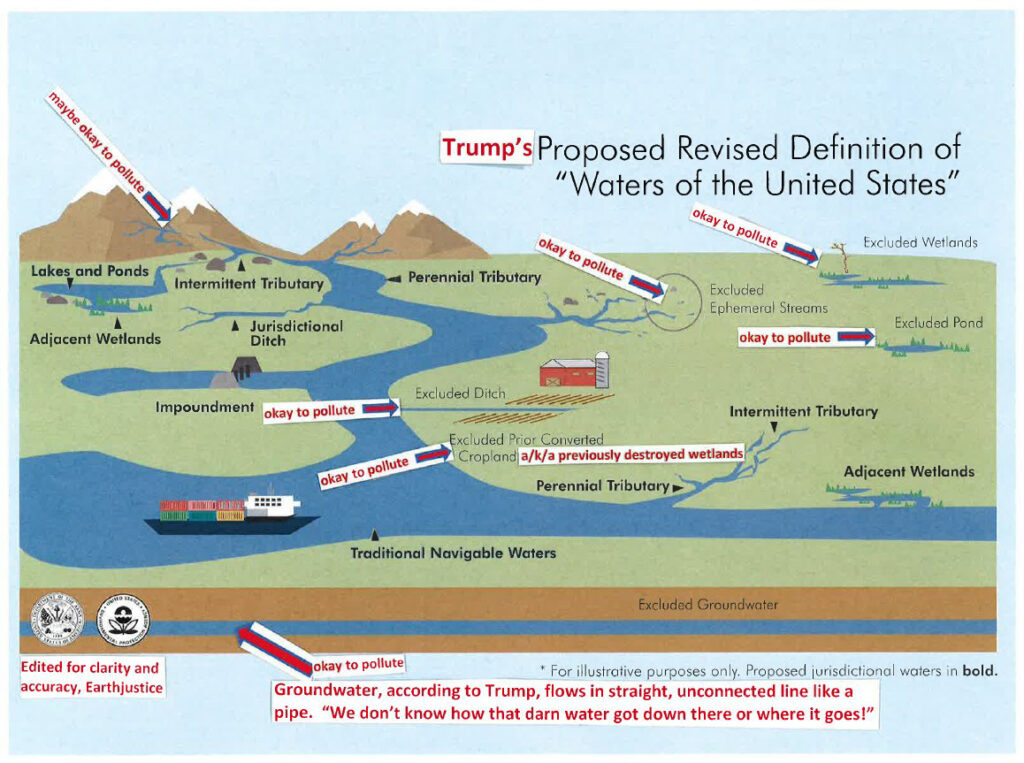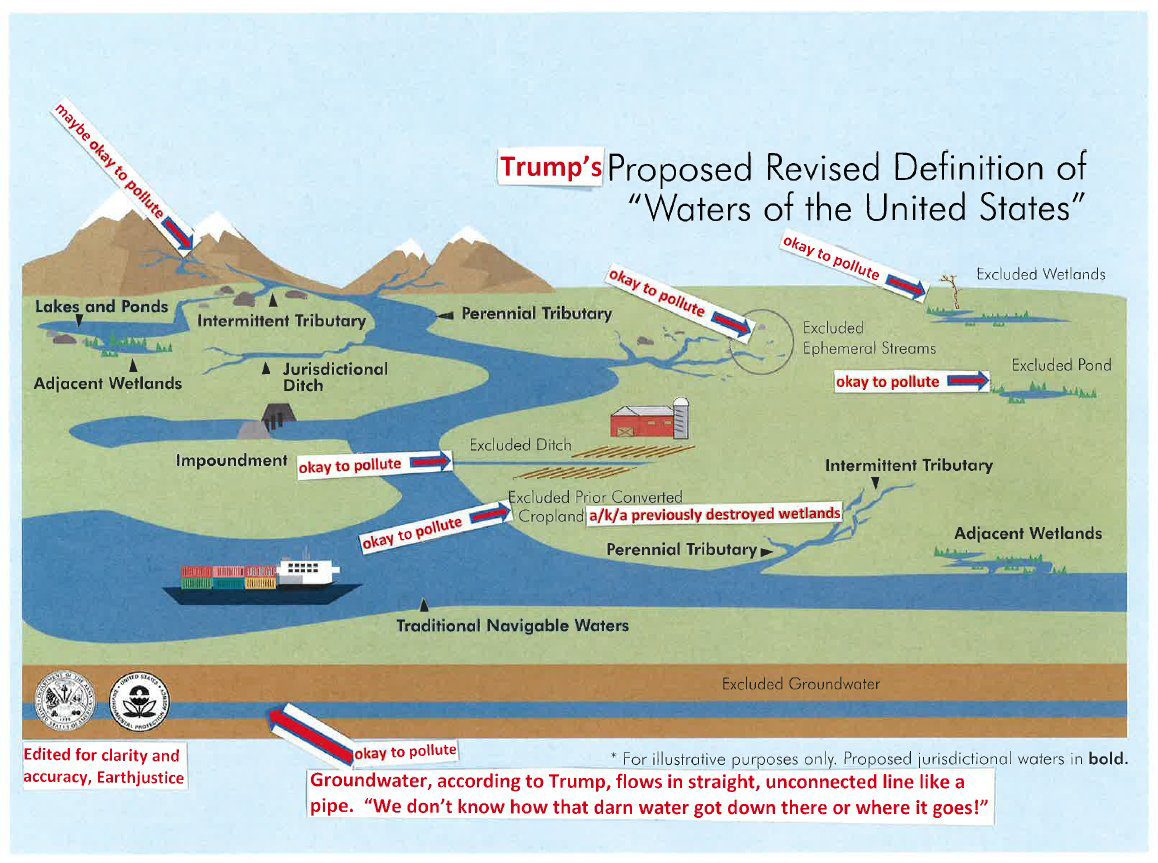The Present, Part I
The Trump administration had pushed for economic growth no matter the human and ecological cost. In the early summer of 2020, then EPA Administrator Andrew Wheeler announced that they were following through on President Trump’s executive order to curb “abuses of the Clean Water Act that have held our nation’s energy infrastructure projects hostage, and put in place clear guidelines that finally give these projects a path forward’’ (New York Times). Jon Devine, director of federal water policy at the Natural Resources Defense Council, replied that the Trump administration’s Clean Water Act rollbacks guts states’ and tribes’ authority to safeguard their waters. The consequences of industrialization’s material aspects are present in human-caused environmental catastrophes, from epic extinctions to rapid erosion, exploited soils, contaminated water, and debased forests leading to desertification, climate change, and habitat collapse. Trump’s executive order against the Clean Water Act adds to the long list of environmental damage done for the sake of capital accumulation.
Contrary to the national agenda, New York City is working to protect the harbor through green infrastructure initiatives that combat stormwater runoff and combined sewer overflow (CSO), both of which carry pollutants into local waterways. New York City has implemented green infrastructure throughout Brooklyn, Queens, the Bronx, and some parts of Manhattan with the goal of reducing CSO by 1.67 billion gallons per year by 2030. In addition to green infrastructure, the DEP also has a long term plan for protecting our local wetlands and Jamaica Bay.

Rolling back the Clean Water Act
The Clean Water Act, dating all the way back to 1972, today establishes a strict regulatory structure for controlling pollutants in streams, lakes, and the wetlands of the United States. Early in 2020, the U.S. Army Corps of Engineers and Trump’s Environmental Protection Agency (EPA) released the Navigable Waters Protection Rule, which detailed how the CWA will be enforced, including which waters receive federal protections under the act, effectively leaving US waters vulnerable to pollution. This was commonly dubbed the “Dirty Water Rule” by environmental groups because, according to the NRDC, “it harmfully—and illegally—narrowed the scope of the Clean Water Act by revoking federal protections for countless important streams, wetlands, and other waters. In particular, the Dirty Water Rule excluded millions of miles of rain-dependent streams and millions of acres of wetlands from critical safeguards of the Clean Water Act.” Source, NRDC.
In June 2021, the Biden Administration announced that it would take steps to repeal the “Dirty Water Rule,” and in August 2021, a federal judge in Arizona tossed out Trump’s illegal rule in response to a lawsuit against the EPA brought on by six federally recognized Indian tribes represented by Earthjustice.
— To learn the full history of the Clean Water Act, read the article by Earthjustice, “What the Trump Administration Is Doing to Your Water.”



